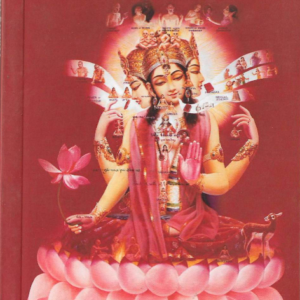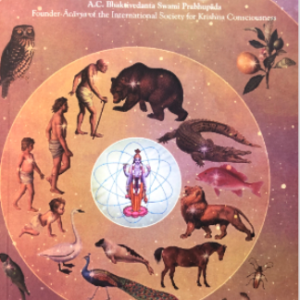The Path of Yoga
₹50.00
Learn the science of yoga in all its aspects in “The Path of Yoga” book. Find out why your current yoga practice might not be serving you as fully as it can. The Path of Yoga explains the highest standard for human beings, the practice of the science of self-realization, bhakti-yoga.
Description
The Path of Yoga:
Table of Contents of The Path of Yoga:
-
-
-
-
Path of Yoga – An Introduction
Part One: The Path of Perfection
1. Yoga as Action
2. Mastering the Mind and Senses
3. Learning How to See God
4. Moderation in Yoga
5. Determination and Steadiness in Yoga
6. Perception of the Supersoul
7. Yoga for the Modern Age
8. Failure and Success in Yoga
9. Destination After Death
10. The Path of PerfectionPart Two: The Perfection of Yoga
1. Yoga as Rejected by Arjuna
2. Yoga as Work in Devotion
3. Yoga as Meditation on Krishna
4. Yoga as Body and Mind Control
5. Yoga as Freedom from Duality and Designation
6. The Fate of the Unsuccessful Yogi
7. Yoga as Reestablishing Relations with Krishna
8. The Perfection of Yoga
The Author
What is the International Society for Krishna Consciousness?
Sanskrit Pronunciation Guide
-
-
-
When we see a book with a title like The Path of Perfection, we may react with a bit of common skepticism: “Oh, another book claiming to give all the answers. One more do-it-yourself enlightenment scheme.” And certainly it seems that such skepticism is justified nowadays.
Our natural desire for ultimate meaning, happiness, enlightenment, liberation, and salvation has become the most exploited commodity of the twentieth century, creating what one contemporary theologian termed a disastrous “seduction of the spirit.” This seduction is, indeed, the most tragic kind of exploitation. And the unfortunate consequence of this exploitation is a kind of deadening cynicism that discourages our search for self-fulfillment and a means to attain it.
The contemporary, thoughtful reader, weary of the many speculative, simplistic books cluttering the bookstore shelves, offering instant formulas for psychological or spiritual salvation, will find The Path of Perfection a welcome relief. Herein one will find a clear, intriguing explanation of the philosophy and practice of mankind’s oldest system of spiritual development—yoga.
Now, the word yoga may conjure up an image of some skinny fakir contorted like a human pretzel, or perhaps a room full of corpulent matrons in black leotards struggling to stand on their heads in hope of improving their health, losing weight, or increasing their sexual powers. This is not what we mean by yoga. Here we are referring to an ancient philosophy and meditational system that has been practiced by millions throughout the ages.
What has, in modern times, been reduced to a commercially exploited technique of bodily agility and pseudomeditation was once a comprehensive and easily applied form of self-realization.
The path of perfection consists of a historic series of talks—elaborations on a previously published commentary—by His Divine Grace A.C. Bhaktivedanta Swami Prabhupada (1896–1977) on India’s greatest spiritual classic, the Bhagavad-gita. In these absorbing talks, Srila Prabhupada explores deeply the philosophy of yoga as explained in the Sixth and Eighth Chapters of the Gita, showing clearly how these timeless teachings apply to twentieth century mankind. Srila Prabhupada’s talks probe questions concerning the nature of consciousness, techniques of meditation, karma, death, reincarnation, and even spiritual ecstasy.
The Bhagavad-gita, described by one contemporary psychologist as “a remarkable psychotherapeutic session,” appears to us in the form of an extraordinary dialogue between Lord Krishna, the Supreme Personality of Godhead, and His warrior disciple Arjuna. Perplexed and confused about his identity and purpose, Arjuna turns to Krishna, who reveals “the path of perfection” to His able student.
The essence of Lord Krishna’s teachings is that one must become a yogi, that is, one whose life is centered on the practice of yoga. And what is yoga? The Sanskrit word yoga literally means “union,” and refers to the union, in love, between the individual consciousness and the Supreme Consciousness, the self and the Superself, the soul and God. Yoga is, indeed, “the path of perfection,” because it aims toward this most exalted human attainment.
In the Bhagavad-gita, we discover four basic varieties of yoga described. Karma-yoga refers to the process whereby one performs his work for God, without the selfish desire for personal gain. Jnana-yoga is the process of elevation to spiritual consciousness through the cultivation of philosophical knowledge. The ashtanga-yoga system, of which the modern “hatha-yoga” is a watered-down version, is a mechanical, meditative practice meant to control the mind and senses and focus one’s concentration on the Supreme.
These three yoga systems culminate in bhakti-yoga, the yoga of selfless, ecstatic, devotional love of God, Krishna. Lord Krishna Himself states in the last verse of Chapter Six, “Of all yogis, he who always abides in Me with great faith, worshiping Me in transcendental loving service, is most intimately united with Me in yoga and is the highest of all.”
In The Path of Perfection, Srila Prabhupada offers a brilliant summary of the methods of bhakti-yoga, revealing the universal applicability of this simple but all-inclusive form of yoga. He shows how even those who are entangled in the complexity and chaos of modern materialistic life can begin an uncomplicated practice which purifies the mind and puts one in touch with the Supreme Consciousness.
This, perhaps, was Srila Prabhupada’s greatest contribution to our age. Srila Prabhupada was an acknowledged master scholar of India’s ancient spiritual culture and of its linguistic foundation, the Sanskrit language. But he was not merely a textual scholar or a philosopher or theologian engaged in the manufacture of interesting philosophical or theological notions. He was a true spiritual genius who succeeded in bringing to life the essence of India’s universal spiritual wisdom in a form which is easy for twentieth century man to understand and practice.
This was the unique genius which inspired the late prime minister of India, Sri Lal Bahadur Shastri, to declare openly that the writings of Srila Prabhupada “are a significant contribution to the salvation of mankind.” The transforming quality of Srila Prabhupada’s writings was also appreciated by sociologist Elwin H. Powell, who commented on Srila Prabhupada’s best-selling edition of the Bhagavad-gita:
“This transcendental mysticism from the East is now taking root in the ’countercultures’ of the West and providing for many a way out of the wilderness of a disintegrating civilization.…If truth is what works, there must be a kind of truth in the Bhagavad-gita As It Is, since those who follow its teachings display a joyous serenity usually missing in the bleak and strident lives of contemporary people.”
If you have any doubts in the quest of spiritual progress, please ask our experts at 9738769587 or 9740603910 or email at contactus@divyamayayoga.com
Additional information
| Weight | .075 kg |
|---|---|
| Dimensions | 15 × 10 × 1 cm |
You must be logged in to post a review.







Reviews
There are no reviews yet.